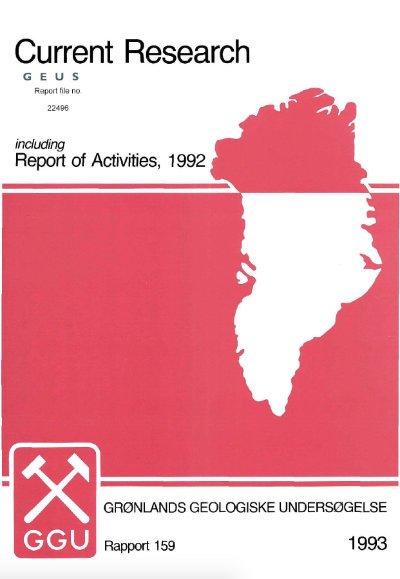Lead isotope studies on mineral showings and ore deposits in East Greenland
DOI:
https://doi.org/10.34194/rapggu.v159.8217Abstract
Lead isotope studies indicate an age of 680 ± 65 Ma for syn-diagenetic stratiform copper mineralisation in the Upper Proterozoic Eleonore Bay Supergroup (EBS) sediments. Metals in EBS-hosted veins were remobilised from local host rocks, or derived from underlying Middle Proterozoic gneisses. Tungsten-arsenic skarns associated with Caledonian granites intruded into the EBS incorporated lead mobilised from the basement gneisses mixed with Caledonian granite lead. Isotopic compositions of trace lead in sparse sulphide occurrences in North-East Greenland point to Late Archaean – Early Proterozoic sources, comparable to the local basement gneisses. Base metal mineralisation in Upper Palaeozoic – Mesozoic rocks in central East Greenland shows a limited range. in lead isotope compositions, suggesting that a large, homogeneous crustal reservoir supplied the metals, or that metals from different sources were effectively mixed. Mineralisation in Tertiary igneous rocks in the Kangerdlugssuaq area of southern East Greenland shows lead isotope evidence for contamination by material from lower crustal Archaean sources.
Downloads
Published
Issue
Section
License
This article is distributed under a CC-BY 4.0 licence, permitting free redistribution and reproduction for any purpose, even commercial, provided proper citation of the original work. Author(s) retain copyright over the article contents.


